
S&P Product FAQ's
-
Where can I purchase S&P products?
You can purchase our products through official distributors. You can find your international distributor in the section International Distribution.
-
How can I find product instructions manuals?
To find product manual you need to select the product you need on the Product section of the website and move to the 'Downloads' section available on all product pages.
-
How to select a fan in EasyVent?
Selecting a product in EasyVent is very simple, you only need to go to the Selectors section and determine the parameters. You can find out more about EasyVent on this page or check out the latest news from the selection software on its blog.
-
Where can I find the wiring diagrams of a product?
The wiring diagram can be found inside the manual of each product. If you don't have the manual physically, you will find it on the website in the 'downloads' section of all the products.
-
What is the ErP? Which products are affected?
The Energy Efficiency Directive 2012/27/EU modifies the Ecodesign Directive 2009/125/EC (ErP Directive) developing a new framework of Ecodesign requirements for energy-related products. This directive takes part into the 2020 strategy, according to which energy consumption must be reduced by 20% and the renewable energies quote should increase in a 20% by 2020. It concerns Ventilation Units, i. e. electricity driven appliances equipped with at least one impeller, one motor and a casing. Intended to replace used air by outdoor air in a building or a part of a building.
-
What equipment is suitable for installation in a bathroom?
In order to choose the most suitable product, the following aspects must be taken into account: the dimensions of the bathroom, the possible location of the extractor fan, especially if it is to be placed on top of the bath or shower, the possible installation, the diameter and number of elbows of the extraction ducting up to its outlet in order to determine the required airflow, as well as the appropriate type of extractor (axial or centrifugal depending on the installation) or if a 12 V fan is required.
-
What is an ATEX fan? What is it for?
An explosive atmosphere is a mixture of air, under atmospheric conditions, of flammable substances in the form of gases, vapours, mists or powders in which combustion spreads to the unburned mixture after ignition.
The identification of the areas and type of risk must be carried out by a specialist technician. For the ventilation of these areas, ATEX fans are required which are specially designed for this purpose. In order to choose a suitable ATEX fan, information about the atmosphere where the fan is to be installed is required, including information about the kind of fluid to be transported (gases or dust). -
What is a heat recovery unit?
A basic ventilation system consists of removing contaminants from a building by removing air from contaminated or damp spaces and expelling it to the outside. In this way, an energy expense is produced due to the energy contained in this extracted air.
To minimise these losses, ventilation systems can have a heat exchanger to recover much of this energy, transferring heat from hot to cold fluid.
In this way, in winter the incoming air will be introduced at a higher temperature and in summer, if there is an air-conditioning system in the building in question, the air can be cooled. -
What is a jet fan and how does it work?
A jet fan is an impulse fan designed to induce large volumes of air in car parks, tunnels and all kinds of large enclosed spaces.
The operating principle of a jet fan is based on preserving the amount of movement by passing through them a low flow rate at high velocity. Thanks to the induction phenomenon, this low flow rate will be transformed into a larger volume of moving air at a lower velocity.
Fan Control
-
How can I connect my REB controller to a competitor’s fan?
We cannot specifically advise how to make connections to a product manufactured by others, nor confirm suitability. Note that S&P REB Controllers use a “controlled (variable) neutral” whereas other manufacturers products may have a “controlled live” method of control.
-
How can a controller be selected a based on the amp rating of a fan?
The current ratings of our fans are published in the sales literature. When selecting a controller it is important that the controller accommodates the current draw of the fan.
-
Can a single controller control more than one fan?
Yes, provided that the full load of the fans does not exceed the maximum current rating of the controller. Power connections must be made at the fans in parallel with the controller. Any thermal protectors must be wired in series and note that if a fan were to fail through overheat then the circuitry in the controller would prevent all fans from running until the fault was corrected.
It is possible to control the speed of more than one fan with a single controller; however, it is important to note that the controller must be suitable to carry the current load of all the fans (added together). In addition, the fans must be of the same type and size. -
How should motor thermal protection (TP/TK) be used?
A thermal protector is embedded inside the motor. If the motor overheats then the protector changes status. Our REB Range of 1-Phase controllers sized 6A and above can monitor the status of the protector and automatically isolate the motor protecting the fan against failure.
For 3-Phase products we would recommend control by an S&P VFD “Variable Frequency Drive” (Inverter) - these VFDs do not require TP connections to be made as they protect the motor by monitoring current. -
My fan connected to an REB controller does not speed control, it runs at full speed only?
Check that the connections are as per our wiring diagram, vary the dial position, check between terminals U1 and U2 at the controller for a variation in voltage, if the problem is not resolved then please contact our office, S&P will ask for the following images:-
- Fan serial plate
- Wiring inside the fan control box
- Controller (so that we can see what it is)
- Wiring inside the controller -
My fan is making a humming noise, how can this be rectified?
Triac-based speed controllers by nature of their design, “chop” the fan’s supply voltage to regulate the fan speed. This can cause a humming noise at the fan. An “auto-transformer” type controller, such as the S&P REV, RMT or RRB-100 ranges employ a method of speed control which is not prone to making the fan motor hum.
-
How do I connect my Fan to an S&P VFD (Inverter)?
The fan must be configured to the correct VFD voltage (see above question) and the wiring instructions
-
My S&P VFD Inverter does not run my fan, why not?
Check your connections and fan configuration, plus the supply voltage into the inverter and at the fan.
-
After one minute my fan stops and “OL3” is displayed on my S&P VFD Inverter. Why?
The inverter is detecting a current overload and is programmed to cut the power output to the fan to protect the motor.
1. It is possible that the motor is running backwards. Check the impeller direction and swap any two of the output phases on U, V or W to reverse the rotation.
2. The pressure in the system is too high. Speak to S&P for advice.
3. The airflow temperature has exceeded the maximum temperature of the fan rating plate. Speak to S&P for advice.
4. Check the value of the Over-load parameter F8.20. -
A fault code is displayed on my S&P VFD inverter, what do the different codes mean?
Please refer to our VFD Instruction booket where the most common fault codes are listed.
-
What S&P products will link to a BMS system?
In general, for BMS connectivity an EC ECOWATT fan is required.
For overall BMS>Fan or Fan>BMS control, our MULTI-REG Controller can interface between the ECOWATT fan and BMS to provide 2-way communication.
If the BMS system has a simple on/off control relay then this can be connected to the mains input supply of non-ECOWATT EC fans to allow remote enable and disable.
Wiring
-
I require wiring instructions for my fan?
If the fan is being connected without any controllers nor sensors, then the wiring diagrams are included in the instruction booklet supplied with the fan. If a S&P REB speed-controller is being fitted then the wiring diagram in the instruction booklet supplied with the controller must be used.
When connecting a fan to a sensor, follow the wiring diagram in the instruction booklet supplied with the sensor. -
The terminals on the fan do not line up with those shown on the wiring diagram?
Please note that the 6-way terminal blocks on many S&P commercial/industrial fans are marked with 2 sets of designations and that particular attention to the markings should be made:-
Terminal U is additionally marked U1
Terminal V is additionally marked V1
Terminal W is additionally marked W1
Terminal X is additionally marked U2
Terminal Y is additionally marked V2
Terminal Z is additionally marked W2 -
How do I know if my 3-Phase fan needs to be configured in STAR or DELTA?
The rating plate indicates the configuration required depending on the power supply. In this example, if the fan was connected to a 230V 3-Phase supply (for instance through a VFD) then the configuration is DELTA.
General
-
I require help selecting a bathroom fan, is the duct length okay for the fan?
Our axial bathroom fans such as the Silent and Decor 100 ranges are suitable for delivering the Building Regulations defined 15 litres per second when they are connected to a 3 metre long 100mm diameter flexible duct which has no more than two 90 degree bends, terminated at a soffit vent or wall grille. However, these fans should not be connected to roof tile terminals because they do not generate sufficient pressure to overcome the internal resistances of these devices. For longer ducts, runs with more bends, rectangular ducts or termination at roof vents then a centrifugal bathroom fan or inline mixed flow unit is needed.
-
What is the difference between cased axial and contra-rotating fans?
Cased axial fans have generally a single motor powering an impeller however our contra- rotating fans have 2 motors each driving an independent impeller, these fans develop almost twice as much pressure at the equivalent sized single-impeller cased axial fan. Contra-rotating fans are particularly useful in extract systems where there are higher pressures generated by the inclusion of filtration.
-
How can a fan be selected given a duty?
Given a theoretical duty point, our Easyvent software can select an appropriate fan to operate in a suitable range. The software determines the actual working point of the fan if there were to be no speed control and presents suitable controllers that can be added to regulate the speed to the desired (theoretical) duty point EasyVent
-
Are fans suitable for outdoor use?
IP, or “Ingress Protection” ratings signify in which conditions a product can be used.
-
How are “mechanical” accessories fitted to our fans ie. Guards?
Many mechanical accessories are not supplied with instruction sheets, the fitments are generic to the trade however in case of difficulty then we can assist on our support line at 01473 276890.
-
The kitchen fan in my restaurant is no longer working after a year….
Has the fan been recently maintained/cleaned? If grease is allowed to build up on the motor then this can act as an insulator and cause the motor to burn-out.
Has a strong degreasing agent been used? Fans should not be exposed to pressure washers or steam lances as these can break down or remove the grease in the motor bearings and penetrate the motor casings with the risk of damage to the motor windings as the steam condenses. The use of caustic cleaning products and degreasing compounds to clean the fan should be avoided as these can migrate into the bearings and windings of the motor.
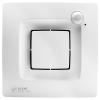 Bathroom Extract Fans
Bathroom Extract Fans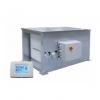 Air Handling Units
Air Handling Units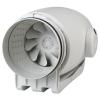 In-line Duct Fans
In-line Duct Fans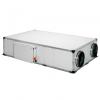 Heat Recovery Units
Heat Recovery Units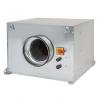 Acoustic Cabinet Fans
Acoustic Cabinet Fans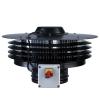 Roof mounted fans
Roof mounted fans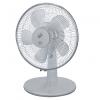 Comfort Cooling Range
Comfort Cooling Range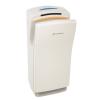 Hand and Hair Dryers
Hand and Hair Dryers 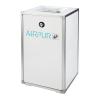 Air Purifiers
Air Purifiers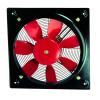 Plate Mounted Axial Flow
Plate Mounted Axial Flow 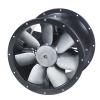 Cylindrical Cased Axial Flow Fans
Cylindrical Cased Axial Flow Fans 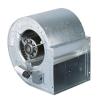 Centrifugal Direct Drive Fan
Centrifugal Direct Drive Fan 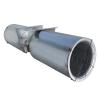 Parking Ventilation
Parking Ventilation 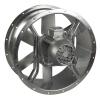 Smoke Extract Fans
Smoke Extract Fans 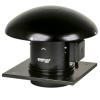 Atex Fans for Explosive Hazardous
Atex Fans for Explosive Hazardous  Heating Industrial Range
Heating Industrial Range 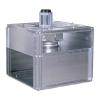 In-line Duct Fans
In-line Duct Fans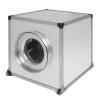 Acoustic Cabinet Fans
Acoustic Cabinet Fans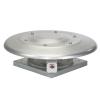 Roof mounted fans
Roof mounted fans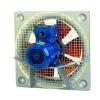 Atex Fans for Explosive Hazardous
Atex Fans for Explosive Hazardous 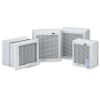 Wall or Window Extract Fans
Wall or Window Extract Fans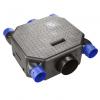 Whole house Extract Units
Whole house Extract Units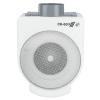 Kitchen Extract Fans
Kitchen Extract Fans 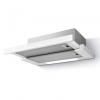 Kitchen Extract Hoods
Kitchen Extract Hoods 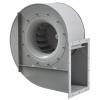 Backward curved centrifugal fans
Backward curved centrifugal fans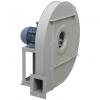 High pressure centrifugal fans with backward curved impeller
High pressure centrifugal fans with backward curved impeller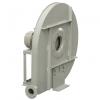 High pressure centrifugal fans with forward curved impeller
High pressure centrifugal fans with forward curved impeller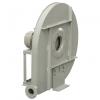 Centrifugal fans with forward curved impeller
Centrifugal fans with forward curved impeller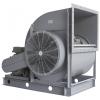 Double inlet centrifugal fans
Double inlet centrifugal fans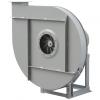 Radial Centrifugal fans for transportation of materials
Radial Centrifugal fans for transportation of materials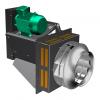 Centrifugal fans for furnace applications
Centrifugal fans for furnace applications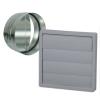 Mounting Accesories
Mounting Accesories  Electrical Accessories
Electrical Accessories

